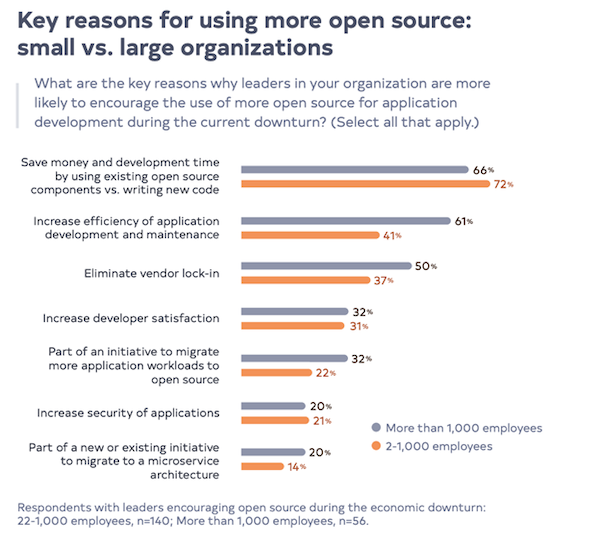4 Reasons Businesses Adopted Open Source In 2020
Differences emerge based on company size, according to Tidelift's third managed open source survey.
 Chris GramsCompanies are turning to open source during the pandemic, with 44% of organizations reporting they will increase their use of open source for application development, finds Tidelift's third managed open source survey.
Chris GramsCompanies are turning to open source during the pandemic, with 44% of organizations reporting they will increase their use of open source for application development, finds Tidelift's third managed open source survey.
We've heard this lyric before; in previous recessions, organizations turned to open source for cost savings and stayed for its other transformational benefits. We wanted to understand which long-term benefits were most helpful to organizations of different sizes. Here's a summary of what we found.
Open source is driving cost and time savings while improving efficiency. A key driver, cited by 68% of organizations, is saving money and development time, as using open source reduces the time developers spend writing new code from scratch. Almost half (48%) report that it increases app development and maintenance efficiency. Organizations with more than 1,000 employees are far more likely to cite this as a reason to encourage the use of more open source (61% vs. 41% for organizations with less than 1,000).
 Tidelift Reasons for Using Open Source in 2020 (Tidelift ©2020)
Tidelift Reasons for Using Open Source in 2020 (Tidelift ©2020)
Eliminating vendor lock-in is high on the list of reasons organizations are using more open source. We found 40% of respondents cited this as a primary reason. Replacing expensive proprietary software with open source ensures that organizations can be more nimble and avoid dependency on vendors. Again, larger organizations favor this reason; 50% of organizations with over 1,000 employees identify this as a key benefit.
Increasing developer satisfaction is another reason to use more open source, with 31% of organizations citing it. As companies compete fiercely for talent, they understand the value of ensuring developers are happy in their work and with the tools they use. The survey found that the top three languages developers are using are JavaScript (78%), Python (52%), and Java (41%).
Additionally, as open source usage increases, 83% of organizations continue to contribute to it, and nearly half have a policy in place to govern contributions. These policies include contributions during work hours to projects an organization uses but doesn't sponsor or manage; contributions to projects they do sponsor or manage; contributions during personal time to non-job-related (personal) projects; and contributions during work hours to non-job-related (personal) projects.
While the long-term migration towards open source continues, it's clear that the impact of COVID-19 may be accelerating this process, and organizations continue to glean deeper value from using and contributing to it.
For more information, view all findings from the 2020 Managed Open Source Survey.
About the Author
Attribution
- Login to post comments